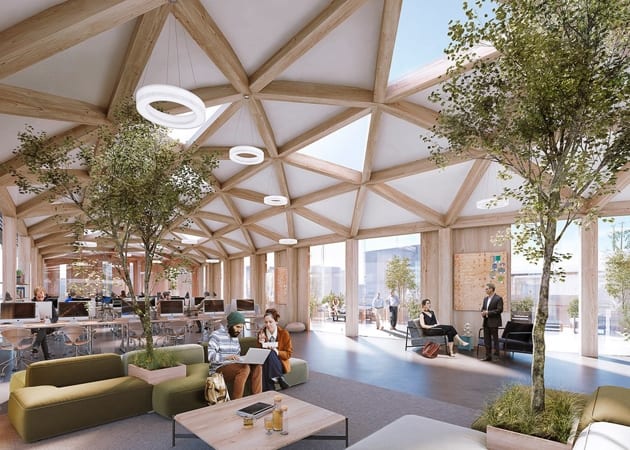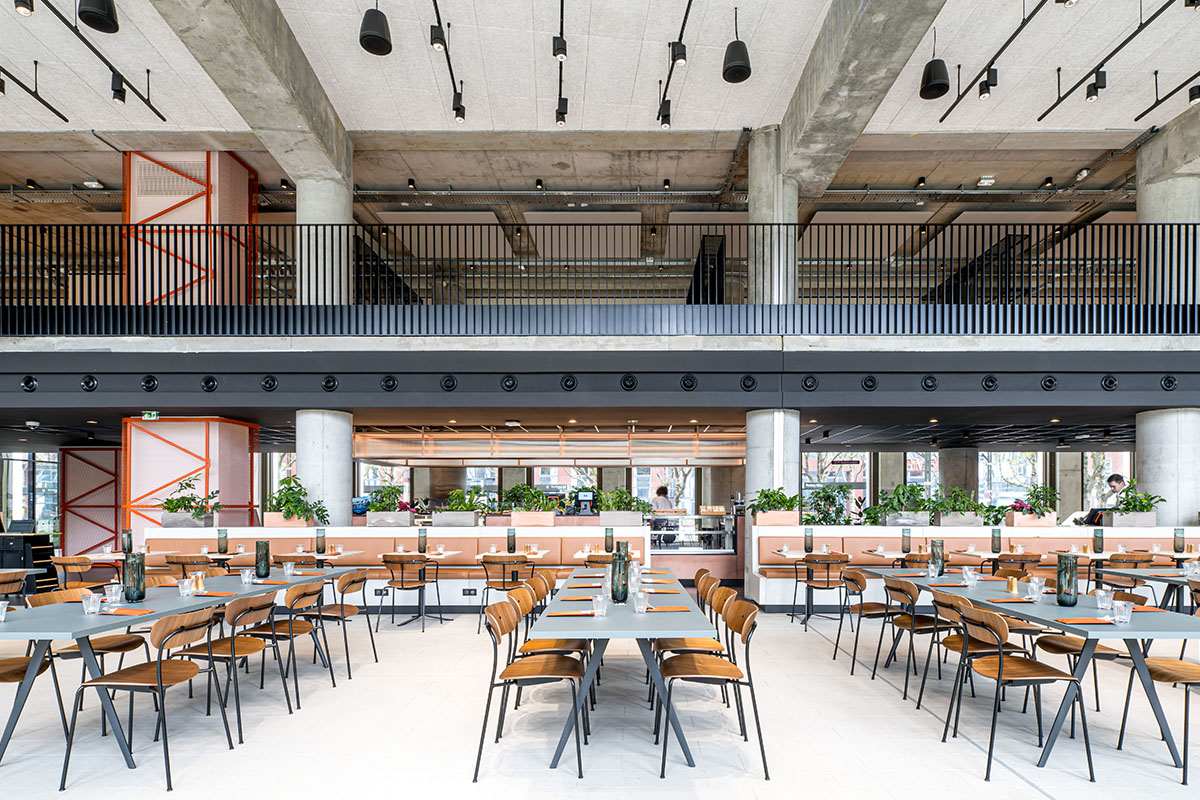 Perkin & Wills Canada Earth Tower project will become the world’s tallest hybrid wood tower|||
Perkin & Wills Canada Earth Tower project will become the world’s tallest hybrid wood tower|||
With the 200-year anniversary of the end of the Industrial Revolution on the horizon, we are reminded that mass production of steelwork that once transformed the world of construction is no longer the primary building method for developers and architects. As the built environment has evolved to the detriment of the earth’s climate, architects are increasingly searching for sustainable solutions to correct the bad habits of the past and improve buildings for the future.
Using cutting edge technology and research, materials we have previously overlooked or underutilised are being developed, expanding the horizon of what is sustainably possible. One of these materials is mass timber. Mass timber, or hybrid timber, comes in various forms including Glue Laminated Timber (‘Glulam’) and Cross Laminated Timber (CLT). From a ‘green’ perspective mass timber stands head and shoulders above its competitors as it does not require the burning of fossil fuels during its production process, it is made from renewable wood and it sequesters carbon dioxide.
Mass timber construction buildings are sprouting up around the globe and we are not just talking about houses; mid-rise and high-rise buildings are being designed and built too. Our Vancouver studio is designing the world’s tallest hybrid wood tower, the 40-storey mixed-use Canada Earth Tower, and we are working with the University of Cambridge and Thornton Tomasetti to explore the concept of a mass timber skyscraper in Chicago.

Using timber as part of Canada Earth Tower’s DNA will dramatically reduce the project’s greenhouse gas emissions through carbon sequestration.
It is clear that fossil energy, which once drove technological, social and economic development, is no longer the environmentally responsible choice. The sustainability credentials of mass timber are well documented. But in addition to the environmental benefits, mass timber buildings are strong and lightweight and thus perform extremely well. So why aren’t we turning to timber as our first-choice building material?
Since the devastating fire at Grenfell Tower in June 2017, understandably, all eyes have been on fire prevention and fire resistance measures in buildings. And as wood is associated with burning, people naturally associate timber buildings with high fire risk. But is that a fair assumption?
Through years of scientific material investigation, it is now understood how the performance of timber changes as it burns and the speed at which it does so, and there is a great deal of evidence that suggests timber is a safe building material. By adapting the thickness and lamination of mass timber, it is possible to achieve the same levels of fire resistance as its competitor steelwork. CLT can be designed to accommodate substantial fire resistance, and unlike steel it remains structurally stable when subjected to high temperatures. When mass timber is exposed to fire, the outer layer burns creating a charred layer, which actually protects the inner layers. The association of wood with burning is, paradoxically, what makes it safe.
Like any material, including steel, there are structural limitations to timber. But we live in a world where boundaries are always being pushed, and the headway being made into the development of mass timber shows its potential for a proliferation of mid-rise and high-rise buildings.
When it comes to safe and sustainable building materials, timber deserves a second look, says Brandon Buck, Associate Principal and Design Director at the London Studio of Perkins and Will.



















